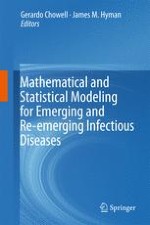2016 | OriginalPaper | Buchkapitel
Epidemic Models With and Without Mortality: When Does It Matter?
verfasst von : Lisa Sattenspiel, Erin Miller, Jessica Dimka, Carolyn Orbann, Amy Warren
Erschienen in: Mathematical and Statistical Modeling for Emerging and Re-emerging Infectious Diseases
Aktivieren Sie unsere intelligente Suche, um passende Fachinhalte oder Patente zu finden.
Wählen Sie Textabschnitte aus um mit Künstlicher Intelligenz passenden Patente zu finden. powered by
Markieren Sie Textabschnitte, um KI-gestützt weitere passende Inhalte zu finden. powered by
